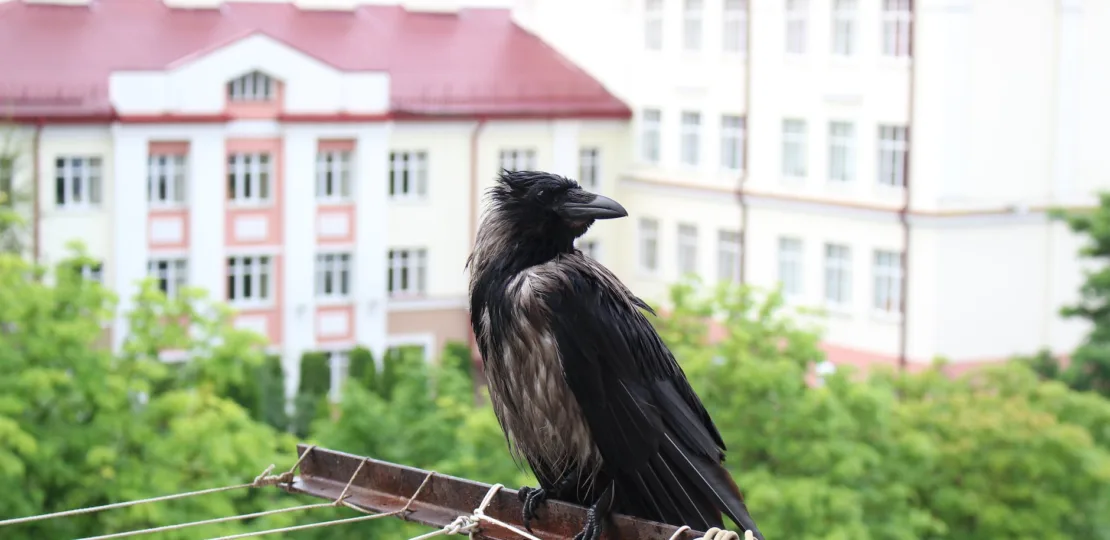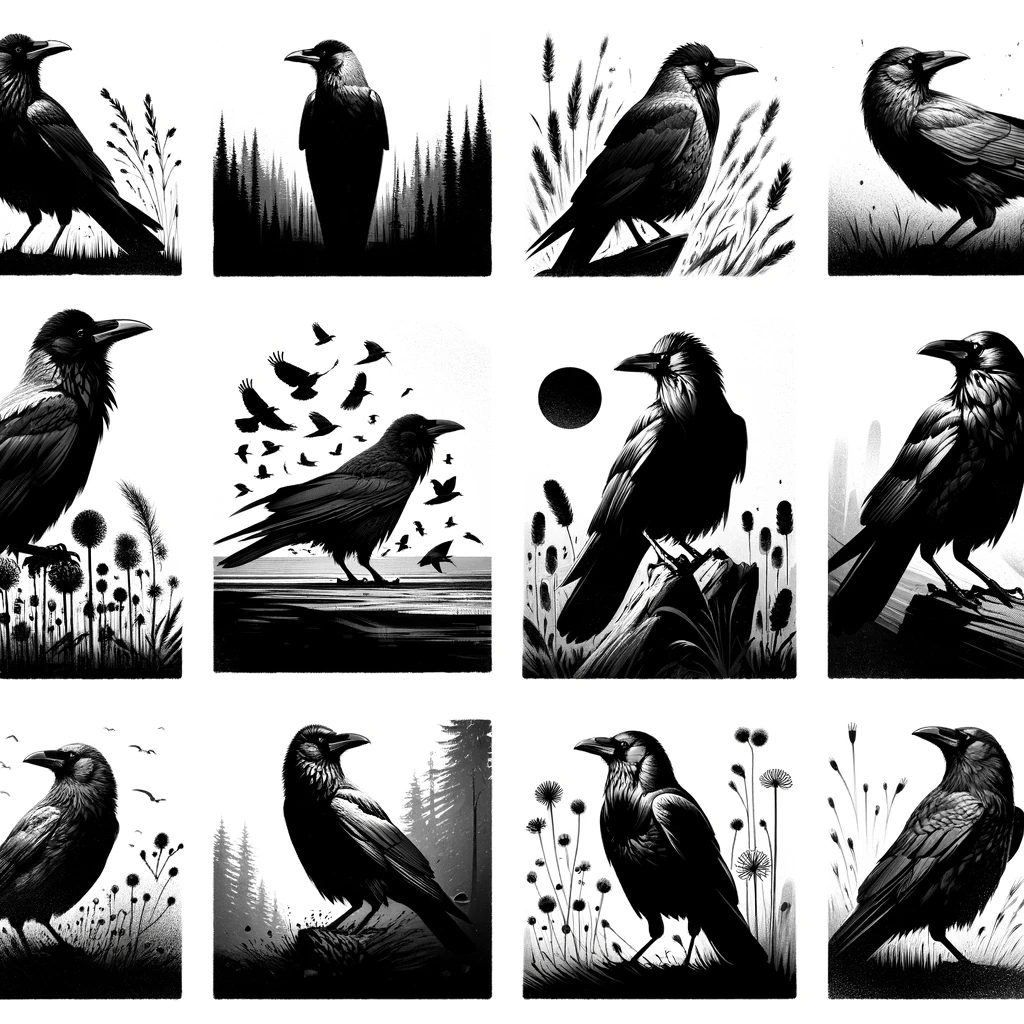The Charismatic Black Feathers: Exploring Corvus Florensis – Flores Crow
December 30, 2023 | by BlackCrow.com

The Enchanting Flores Crow
Introducing the Flores Crow
The Flores Crow, scientifically known as Corvus florensis, is a captivating species of crow that can be found on Flores Island in Indonesia. This unique bird has a rich history and is known for its distinct features and behaviors. The Flores Crow is a member of the Corvidae family, which includes other intelligent and charismatic birds such as the Pied Crow, Little Crow, and Cape Crow.
Habitat and Distribution
The Flores Crow is endemic to Flores Island, located in the Lesser Sunda Islands of Indonesia. This island is characterized by its diverse landscapes, including mountains, forests, and coastal areas. The Flores Crow can be found in various habitats throughout the island, including lowland forests, primary forests, and agricultural areas.
While the exact population size of the Flores Crow is unknown, it is believed to have a limited distribution range. The crow is primarily found in the western and central parts of Flores Island. Its range may extend to nearby islands, but further research is needed to determine the extent of its black crow distribution.
Understanding the habitat and distribution of the Flores Crow is essential for conservation efforts. By studying its behavior and monitoring its population, researchers can develop strategies to protect this enchanting species and ensure its survival for future generations.
Appearance and Characteristics
The Flores Crow, scientifically known as Corvus florensis, is a captivating bird with distinctive features that set it apart from other crow species. Let’s take a closer look at its appearance and characteristics.
Distinctive Black Feathers
One of the most prominent features of the Flores Crow is its striking black plumage. The glossy black feathers give the bird a charismatic and elegant appearance. These feathers not only serve as a protective layer but also contribute to the crow’s unique allure.
Size and Physical Features
In terms of size, the Flores Crow is relatively small compared to other members of the crow family. On average, it measures around 40 centimeters (15.7 inches) in length. Despite its smaller stature, the Flores Crow possesses a robust build and a strong beak.
The beak of the Flores Crow is proportionate to its body size and is well-adapted for various tasks. It is slightly curved and sharp, allowing the bird to forage for food efficiently. The wingspan of the Flores Crow spans approximately 80 centimeters (31.5 inches), enabling it to navigate its habitat with ease.
Another notable physical feature of the Flores Crow is its expressive eyes. The eyes are large and dark, providing excellent vision for the bird to spot prey and potential threats. Its keen eyesight is essential for survival of blackcrows in its natural environment.
Understanding the appearance and characteristics of the Flores Crow helps us appreciate its unique beauty and adaptability. As we delve deeper into its behavior and conservation status, we will gain a comprehensive understanding of this enchanting bird.
Behavior and Diet
Understanding the behavior and diet of the Flores Crow, also known as Corvus Florensis, provides insights into the fascinating life of this charismatic bird.
Social Structure and Communication
The Flores Crow is highly social and typically forms small groups or flocks. Within these flocks, there is a complex social structure where individuals establish hierarchies through various interactions such as vocalizations, displays, and physical posturing. These interactions help maintain order and reduce conflict within the group.
Communication among Flores Crows is primarily vocal. They have a diverse repertoire of calls and vocalizations, ranging from loud caws to softer coos. These vocalizations serve various purposes, including establishing territory, warning of potential threats, and maintaining group cohesion. The ability to communicate effectively is crucial for coordinating group movements and ensuring the overall well-being of the flock.
Feeding Habits and Diet
The Flores Crow has an omnivorous diet, meaning it consumes both plant and animal matter. This adaptability allows the black crow to thrive in a variety of environments. Their diet primarily consists of fruits, seeds, insects, small vertebrates, and carrion.
When foraging for food, Flores Crows display remarkable intelligence and problem-solving abilities. They have been observed using tools, such as sticks or twigs, to extract insects from crevices or to probe the ground for hidden prey. This behavior highlights their resourcefulness and adaptability.
Flores Crows are also known to engage in cooperative feeding, where multiple individuals work together to obtain food. This cooperative behavior may involve group hunting or mobbing larger animals to access food sources that would otherwise be inaccessible.
By understanding the behavior and diet of the Flores Crow, we gain a deeper appreciation for their intelligence, adaptability, and social nature. These remarkable birds play a vital role in their ecosystem, contributing to the balance of their habitat.
Conservation Status
The Flores Crow, scientifically known as Corvus florensis, is a unique and charismatic species native to Flores Island in Indonesia. While it is not currently listed as endangered by the International Union for Conservation of Nature (IUCN), the population of Flores Crows faces threats that require attention and conservation efforts to ensure their long-term survival.
Threats to the Flores Crow
Several factors contribute to the vulnerability of the Flores Crow population. Habitat loss and degradation due to deforestation, agricultural expansion, and human activities pose significant threats to their natural habitat. As human settlements expand and forests are cleared for various purposes, the available habitat for the Flores Crow diminishes, making it more challenging for the species to find suitable nesting and foraging areas.
Another threat to the Flores Crow is the illegal pet trade. These intelligent and captivating birds are often targeted for capture and trade, resulting in the removal of individuals from the wild. This practice disrupts their population dynamics and can have a detrimental impact on their overall survival.
Conservation Efforts and Protection
Conservation efforts are essential to safeguard the population of the Flores Crow and ensure the preservation of their unique habitat. Several organizations, local communities, and government agencies are working together to protect this species and its environment.
One of the key initiatives involves raising awareness about the importance of the Flores Crow and its role in maintaining the ecological balance of the island. Educational programs, community engagement, and public outreach campaigns aim to foster a sense of stewardship among local communities and promote responsible environmental practices.
Additionally, protected areas and nature reserves have been established to conserve the natural habitat of the Flores Crow. These protected areas provide a safe haven for the birds and help to control human activities that may threaten their survival. Through rigorous black crow monitoring and enforcement, these protected areas contribute to the conservation of the Flores Crow population.
Research and scientific studies play a crucial role in understanding the behavior, ecology, and habitat requirements of the Flores Crow. By gathering data and conducting field surveys, researchers can provide valuable insights into the species’ conservation needs. This knowledge informs conservation strategies and helps guide decision-making processes for the long-term protection of the Flores Crow.
To ensure the sustainability of the Flores Crow population, it is crucial to continue monitoring their population size and trends. By regularly assessing their status, conservationists can identify potential threats and take appropriate actions to mitigate them.
Through the combined efforts of local communities, conservation organizations, and government agencies, the conservation status of the Flores Crow can be improved, securing a brighter future for this enchanting species.
It is important to recognize the conservation needs of not only the Flores Crow but also other species of crows around the world. To learn more about different crow species and their conservation status, visit our articles on corvus albus – pied crow, corvus bennetti – little crow, corvus capensis – cape crow, corvus brachyrhynchos – american crow, corvus cornix – hooded crow, corvus corone – carrion crow, corvus culminatus – indian jungle crow, corvus edithae – somali crow, corvus enca – slender-billed crow, corvus fuscicapillus – brown-headed crow, corvus hawaiiensis – hawaiian crow, corvus imparatus – tamaulipas crow, corvus insularis – bismarck crow, corvus jamaicensis – jamaican crow, corvus kubaryi – mariana crow, corvus leucognaphalus – white-necked crow, corvus levaillantii – eastern jungle crow, corvus macrorhynchos – large-billed crow, corvus meeki – bougainville crow, corvus moneduloides – new caledonian crow, corvus orru – torresian crow, corvus nasicus – cuban crow, corvus ossifragus – fish crow, corvus palmarum – palm crow, corvus sinaloae – sinaloa crow, corvus splendens – house crow, corvus tristis – grey crow, corvus torquatus – collared crow, corvus typicus – piping crow, corvus validus – long-billed crow, corvus unicolor – banggai crow, corvus violaceus – violet crow, corvus woodfordi – white-billed crow, corvus praecorax, corvus hungaricus, corvus simionescui, corvus moravicus, corvus pliocaenus, corvus antecorax, corvus bragai, corvus betfianus, corvus fossilis, corvus neomexicanus, corvus antipodum, corvus impluviatus, corvus moriorum, and corvus pumilis, corvus viriosus, corvus sp..
Fun Facts about the Flores Crow
The Flores Crow, scientifically known as Corvus florensis, is a fascinating bird that holds both mythological and cultural significance. Let’s explore some fun facts about this charismatic black-feathered creature!
Mythology and Cultural Significance
The Flores Crow has long been a part of the local black crow mythology and folklore on the island of Flores, Indonesia. According to legend, the crow is believed to possess supernatural powers and is considered a symbol of good fortune. It is often associated with wisdom, intelligence, and mystical connections to the spirit world. The crow’s distinctive black feathers have inspired stories and beliefs passed down through generations, adding to its allure.
Interesting Behaviors and Adaptations
The Flores Crow exhibits a range of interesting behaviors and adaptations that make it unique among its avian counterparts.
- Vocalizations: The Flores Crow has a diverse repertoire of calls and vocalizations. These vocalizations serve various purposes, including communication within the flock, warning of potential threats, and establishing territory.
- Tool Use: Like its close relatives, the New Caledonian Crow and the Hawaiian Crow, the Flores Crow has shown remarkable tool-using abilities. It has been observed using sticks and other objects to extract insects from tree trunks, showcasing its problem-solving skills and resourcefulness.
- Feeding Habits: The Flores Crow is an omnivorous bird, feeding on a wide range of food sources. Its diet includes fruits, seeds, insects, small vertebrates, and carrion. This adaptability allows the crow to thrive in diverse environments.
- Nesting Behavior: The Flores Crow constructs its nests using twigs and leaves, usually in the canopy of trees. These nests provide protection for the eggs and young chicks, safeguarding them from potential predators.
- Conservation Status: Unfortunately, the Flores Crow is currently listed as critically endangered. Habitat loss, deforestation, and human activities pose significant threats to its population. Conservation efforts are underway to protect the remaining individuals and their habitats.
The Flores Crow’s rich mythology and intriguing behaviors make it a captivating subject of study and admiration. By learning more about this unique black crow, we can raise awareness about its conservation needs and contribute to the preservation of its population in the wild.
RELATED POSTS
View all


